11 Best Programming Books for Beginners and Experienced Programmers (Spring 2023)
A compilation of the best programming books – for experienced programmers and total beginners – to learn coding fundamentals and advanced concepts.
Getting a demanded profession like a developer is not an easy task. It requires not only theoretical knowledge but also practical skills. Any programming language has a lot of subtleties and it takes years to learn all of them. Nevertheless, there is a number of books that can help you get started in coding or improve your current level.
Our team of experts examined and thoroughly read 23 books and chose the 11 best programming books, with Clean Code: A Handbook of Agile Software Craftsmanship being a top pick. There are books for n00bs and experienced developers, for those who want to get into web development, system administration, or become a project manager. One book is even about interviewing for a job in the IT industry.
| Name | Nomination | Overall rating |
|
1. Clean Code: A Handbook of Agile Software Craftsmanship This book will teach how to write clean code, perfect for intermediate programmers |
Editor’s Choice | 9.9 |
|
2. Cracking the Coding Interview: 189 Programming Questions and Solutions This book contains 189 most common interview questions that will help you to get the job of your dreams |
Best for Interview Preparation |
9.8 |
|
This book covers algorithms in depth, making their design and analysis easy and possible for all levels of readers |
Bible of Algorithms |
9.7 |
|
4. The Pragmatic Programmer: Your Journey To Mastery This book focuses on the “pragmatic” approach to programming, giving concrete, actionable tips |
Most Versatile |
9.6 |
|
5. Don’t Make Me Think, Revisited: A Common Sense Approach to Web Usability This book gives a clear and concise guide to creating intuitive navigation and information design |
Best for UX Designers and Programmers |
9.5 |
|
6. Design Patterns: Elements of Reusable Object-Oriented Software An object-oriented book that presents a catalog of 23 simple and succinct solutions to commonly occurring design problems |
Best for Object-Oriented Programming |
9.4 |
|
7. Code: The Hidden Language of Computer Hardware and Software This book will explain you how the coding work using familiar language systems like Braille and Morse code |
Best for Beginners |
9.3 |
|
8. Head First Design Patterns: A Brain-Friendly Guide With the visuals and content that this book provides, it will teach you to easily use patterns used by developers to create software |
Best Visuals |
9.2 |
|
9. The Art of Computer Programming, Volumes 1-4 In four volumes of this book, different aspects of algorithms and programming techniques are covered with humor and exercises |
Best for Solving Complex Problems |
9.1 |
|
10. Refactoring: Improving the Design of Existing Code The book for experienced programmers covers the topic of refactoring the code for bug prevention |
Best for Experienced Coders | 9.0 |
|
The book it addresses problems that are still common in software project management |
Best For Project Managers |
8.9 |
Top 6 Programming Books Review 2022
Features:
- Author: Robert C. Martin
- Latest Edition: 1st (2008)
- Pages: 464 pages
- Publisher: Pearson
- Format(s): kindle, audiobook, paperback, spiral-bound
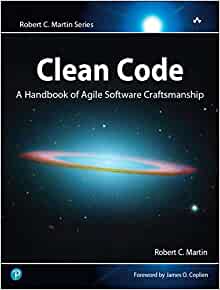
The Clean Code: A Handbook of Agile Software Craftsmanship is our Editor’s Choice for the best programming book because it is a revolutionary paradigm that teaches readers how to write clean code. This book is divided into three parts, with the first part describing the principles, patterns, and practices of writing clean code. In the second part, you’ll find several case studies of increasing complexity. Code clean-up is vital for every case study in order to produce a sound and efficient code base. The final part is the payoff: a single chapter containing heuristics and “smells” that were discovered while creating the case studies. It is an essential resource for any developer, software engineer, project manager, team lead, or systems analyst who wants to improve their coding skills.
The Clean Code: A Handbook of Agile Software Craftsmanship stands out from all the other books on this list because it emphasizes on code cleanliness and maintainability. Very few programming books are designed to equip you with the skills of telling the difference between good and bad code. The book is a perfect option for intermediate programmers looking to produce better code.
What we liked
- The book forces you to change the mindset from algorithmic performance to code cleanliness and maintainability.
- It is well-organized and easy to follow.
- It covers a lot of important topics, including code smells, refactoring, design patterns, and unit testing.
- The book includes many code examples that illustrate the concepts being discussed.
- The rules can be applied to all object-oriented languages.
What could be better
- The code samples in the book do not match what the book preaches.
- The book doesn’t discuss newer programming approaches.
Features:
- Author: Gayle Laakmann McDowell
- Latest Edition: 6th (2015)
- Publisher: CareerCup
- Pages: 687
- Format(s): paperback
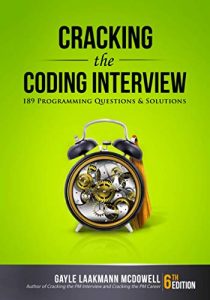
Cracking the Coding Interview: 189 Programming Questions and Solutions is often touted as the best book for interview preparation, and for good reason. The book contains a wealth of interview questions ranging from basic to trickier algorithm problems, providing readers with ample opportunity to practice and hone their skills. In addition, the book features walk-throughs of each solution so that readers can learn how to derive the answer themselves. It also includes a behind-the-scenes look at how top companies like Google and Facebook hire developers. Finally, the book includes extensive coverage of essential topics such as big O time, data structures, and core algorithms – all of which are sure to be covered in any coding interview.
This book is different from all the other options on this list because it is specifically designed to help readers pass a coding interview. You may be a professional programmer, but can get completely thrown off balance when asked to write flawless code on a whiteboard at an interview. Cracking the Coding Interview is all you need to ace that coding interview regardless of your knowledge level.
What we liked:
- The book is a great in-depth source of information for those who are preparing for an interview with a FAANG company.
- It’s also a great way to brush up on your knowledge of algorithms and programming, as it covers various topics at different levels of difficulty.
- Thousands of readers have benefitted from this book, and it has even helped some of them get their dream job.
What could be better:
- Lack of complex Advanced SQL (ranking, case, CTE) and data mart design basics questions.
- It’s not really a quick guide to interview questions, but rather a comprehensive guide to learning programming.
Features:
- Author: Thomas H. Cormen
- Latest Edition: 3rd
- Publisher: The MIT Press (2009)
- Pages: 1292
- Format(s): kindle, hardcover, paperback
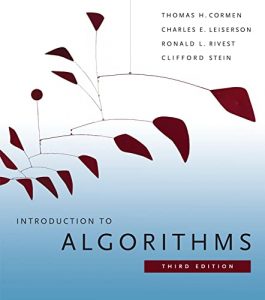
The Introduction to Algorithms is considered to be the Bible of Algorithms due to its comprehensive coverage and rigorous mathematical foundation. The book has been essential for students and professionals alike, with each chapter being self-contained and able to stand on its own as a unit of study. The third edition features new chapters on van Emde Boas trees and multithreaded algorithms, substantial additions to the chapter on recurrence (now called “Divide-and-Conquer”), and an appendix on matrices. It also includes improved treatment of dynamic programming and greedy algorithms, as well as a new notion of edge-based flow in the material on flow networks. Many exercises and problems have been added for this edition, making it the most complete and up-to-date resource on algorithms available.
The other programming books on this list like ‘Pragmatic Programmer: Your Journey To Mastery,’ may cover algorithms but they don’t stack up against this book’s rigor in explaining the technical subject. The book covers algorithms in depth, making their design and analysis easy and possible for all levels of readers. It is a must-have for any programmer or a high-level software engineer.
What we liked:
- The book does a great job of demystifying algorithms and giving readers a clear understanding of how they work.
- The authors have a wealth of knowledge and experience to share, and they’re great at guiding readers through each chapter.
- At the end of the book, you’ll find an appendix with a lot of useful mathematical facts and tips/review on summation techniques, set theory, graph theory, combinatorics, probability, and linear algebra.
What could be better:
- The analysis of specific algorithms does not provide enough explanation.
Features:
- Author: Dave Thomas and Andy Hunt
- Latest Edition: 2nd (2019)
- Publisher: Addison-Wesley Professional
- Pages: 352
- Format(s): kindle, audiobook, hardcover
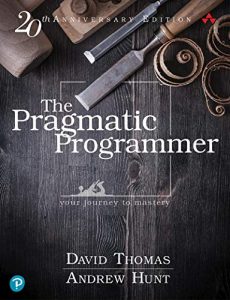
The Pragmatic Programmer is not just a book for beginners. It’s also a guide for experienced programmers who want to stay on top of their game and improve their craft. The reason it’s so versatile and practical is that it covers such a wide range of topics, from personal responsibility and career development, to architectural techniques for keeping your code flexible and easy to adapt and reuse. What sets The Pragmatic Programmer apart from other books on software development is its focus on the “pragmatic” approach to programming. This means that the book doesn’t just offer theoretical advice, but instead provides concrete, actionable tips that you can use to improve your own work.
None of the books on this list comes close to the Pragmatic programmer’s all-roundness. It is like a one-stop shop for all programming knowledge. Only the ‘Code: The Hidden Language of Computer Hardware and Software’ book comes close in terms of simplicity. Anyone can make the most out of it, from coding beginners to professional programmers looking to harness the power of basic tools and learning continuously.
What we liked:
- This book is full of practical advice that can help you improve your programming skills and career.
- It covers a wide range of topics, including working on a team, using IDEs, DevOps, security, and patterns.
- It is filled with real-world examples and analogies that make complex concepts easy to understand.
What could be better:
- The book does not introduce the reader to any specific programming language or development environment.
- It is more philosophical in approach and is meant to make the reader think about their development processes than to teach them any new tool.
Features:
- Author: Steve Krug
- Latest Edition: 3rd (2013)
- Publisher: New Riders
- Pages: 216
- Format(s): kindle, paperback
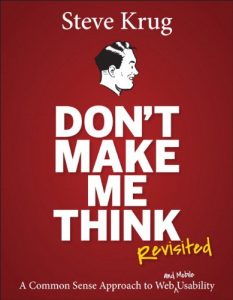
Don’t Make Me Think, Revisited: A Common Sense Approach to Web Usability is the best book for UX designers and programmers because it provides a clear and concise guide to creating intuitive navigation and information design. The book is also extremely practical, with updated examples and a new chapter on mobile usability. Steve Krug’s witty writing style makes the book a pleasure to read, and the principles described in the book are essential for anyone working on websites. If you want to learn how to create beautiful and user-friendly websites, Don’t Make Me Think, Revisited: A Common Sense Approach to Web Usability is the perfect place to start.
This book compares favorably with other famous programming books like the ‘The Pragmatic Programmer’ on this list when it comes to understanding web usability. Steve Krug is a web usability guru and any UX designer or programmer would highly benefit from his insights. Even if you are already a seasoned programmer, this book is a must-have if you want a better understanding of the principles of information design.
What we liked:
- The author provides a clear and concise method for testing your designs on real users, which is essential for any UX designer.
- It is easy to read and understand, even for those with no prior experience in UX.
- This book is easy to follow and understand due to its clear chapter structure and helpful illustrations.
What could be better:
- A little bit dated examples, but the principles are still relevant.
Features:
- Author: Erich Gamma
- Latest Edition: 1st (1994)
- Publisher: Addison-Wesley Professional
- Pages: 416
- Format(s): kindle, hardcover, paperback
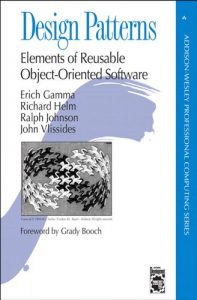
One of the best object-oriented programming books is “Design Patterns: Elements of Reusable Object-Oriented Software”. It captures a wealth of experience in the design of object-oriented software and presents a catalog of simple and succinct solutions to commonly occurring design problems. The 23 patterns described in this book can help you create more flexible, elegant, and ultimately reusable designs. In addition, the book includes code examples that demonstrate how the patterns can be implemented in object-oriented programming languages such as C++ or Smalltalk.
There is no better object-oriented programming book than Design Patterns in the market. Whether you are a beginner, intermediate or professional programmer, you can use the book as a guide to patterns or a reference book for continuous learning. It close alternative is the ‘Head First Design Patterns’ book on this list which is a more brain-friendly guide for understanding patterns.
What we liked:
- The book is divided into three sections, each discussing a different category of design pattern. This makes the book easy to navigate and understand.
- The book includes a review of all the categorical patterns at the end of each section. This is helpful for understanding how the patterns relate to each other and when to use them.
- It is incredible for both a reference book and as a guide to patterns in general.
What could be better:
- It can be considered not complete as the design patterns are not static in languages.
Features:
- Author: Charles Petzold
- Latest Edition: 1st (2000)
- Publisher: Microsoft Press
- Pages: 400
- Format(s): kindle, hardcover, paperback
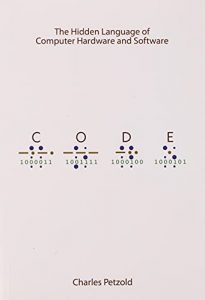
Programming can be a difficult and intimidating subject for beginners, but Code: The Hidden Language of Computer Hardware and Software does an excellent job of introducing the basics in a way that is both clear and enjoyable. Petzold, the author of the book, uses everyday objects and familiar language systems like Braille and Morse code to explain how computers work. He also weaves in a history of how technology has developed over time. As a result, readers will not only understand the basics of programming, but they will also gain a deeper appreciation for the ingenuity and innovation that have made computers what they are today.
If you are a beginner to coding and can’t get your hands on an all-around book like the ‘Pragmatic Programmer on this list, this is your best bet. It will help you wrap your head around the complex concept of coding easily. However, since it is about the same price as the Pragmatic Programmer, you would be better off with the latter option if you have the desire to continue learning programming.
What we liked:
- Code provides a clear and concise explanation of how computers work, from the basic components of hardware to the more complex concepts of software programming.
- The book covers a wide range of topics, from the history of code and the basics of binary to more advanced concepts like data structures and algorithms.
- Code includes helpful illustrations and diagrams that explain difficult concepts in a visual way.
What could be better:
- It addresses a variety of audiences at various parts, and each class of reader might find some sections to shallow or too deep.
- Some illustrations and diagrams might be difficult to understand.
Features:
- Author: Eric Freeman
- Latest Edition: 1st (2004)
- Publisher: O’Reilly Media
- Pages: 694
- Format(s): paperback
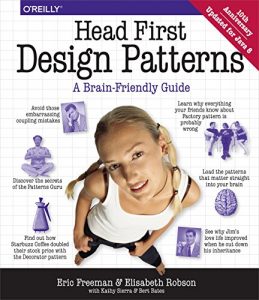
What makes Head First Design Patterns: A Brain-Friendly Guide so great is the visuals and content. The book uses a visually rich format that is designed to be easy for the brain to process. The content is also well-written and easy to understand. This book will teach you the proven patterns used by developers to create software that is not only functional and stylish but also flexible and reusable. The exercises and challenges help to reinforce the concepts learned in the book. Plus, the code for all the examples and exercises now compiles and runs with Java 8. This makes the book even more valuable for those who want to learn about design patterns.
Only the ‘Design patterns’ book on this list is a worthy contender for the ‘Head First Design Patterns’ book. However, this book is a better option if you need a simplified way of learning object-oriented software. It has a better combination of fun and serious sections that make it brain-friendly and more engaging than ‘Design patterns.’ If you are an object-oriented software newbie, this book should be your prime choice.
What we liked:
- It is an excellent introductory text for design patterns, plus object-oriented design in general.
- It combines fun and serious sections in a way that keeps you engaged.
- It loops back and re-visits topics to reinforce concepts.
What could be better:
- Some examples in the book leave questions.
- The Java-specific portions aren’t useful if you are not using that language.
Features:
- Author: Donald E. Knuth
- Latest Edition: 1st (2011)
- Publisher: Addison-Wesley Professional
- Pages: 3168
- Format(s): hardcover
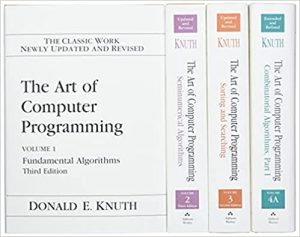
The Art of Computer Programming, Volumes 1-4 is a series of books for solving complex problems in computer programming. Each volume in the series covers a different aspect of algorithms and programming techniques. The first volume covers the basics of algorithm design and analysis. The second focuses on data structures and program efficiency. The third deals with random numbers and probabilistic algorithms. The fourth covers combinatorial algorithms. The four volumes are exhaustive in their coverage of the basics, with clear explanations and well-chosen examples. The writing is impeccable, with occasional bits of humor, and the exercises are numerous and challenging, with solutions or helpful hints provided.
The only book that comes close to the Art of Computer Programming in explaining algorithms is ‘Introduction to Algorithm.’ If you are a programming novice, you should get ‘Introduction to Algorithms’ first to grasp the concept then get to learn how to solve complex problems in computer programming. Essentially, it is suitable for intermediate and professional programmers who have the basics covered.
What we liked:
- There are tons of problems to solve, with full answers in the back.
- Each problem has a rating on its difficulty. This allows you to challenge yourself and push your boundaries.
What could be better:
- The language of the author is quite challenging for beginners as there are many terms, but if you’re willing to put in the effort, it’s worth it.
Features:
- Author: Martin Fowler
- Latest Edition: 2nd (2018)
- Publisher: Addison-Wesley Professional
- Pages: 448
- Format(s): kindle, hardcover
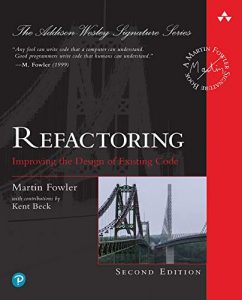
Refactoring: Improving the Design of Existing Code is widely regarded as one of the best books on programming for experienced programmers. The book covers a wide range of topics related to refactoring, including how to recognize code that needs refactoring, how to actually do it successfully, and how to avoid common pitfalls. The book also includes free access to the canonical web edition, which features, even more, refactoring resources. Refactoring code helps to prevent bugs from being introduced and makes it easier to read and understand. Although the process seems small, it can have a big effect on how software systems are designed. Without understanding and utilizing refactoring principles, designers, architects, and programmers will not be successful.
Refactoring is a goon an option for an experienced coder as ‘the popular ‘Art of Computer Programming, Volumes 1-4.’ As a seasoned coder you can get both books to learn how to solve complex problems and recognize ‘bad smells’ that need refactoring in code. No book will help you understand the principles of refactoring easily like this Martin Fowler book.
What we liked:
- It mostly focuses on examples rather than theory which is only in the first couple of chapters of the book.
- The examples provided in the book are excellent case studies on how to revise code.
What could be better:
- The book is verbose so it’s easy to lose focus and interest in it.
Features:
- Author: Frederick Brooks
- Latest Edition: Anniversary (1995)
- Publisher: Addison-Wesley Professional
- Pages: 336
- Format(s): kindle, paperback
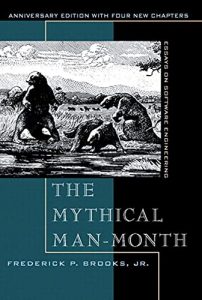
This book is essential for project managers because it offers insight into the difficulties of managing complex projects. The Mythical Man-Month is still relevant today because it addresses problems that are still common in software project management. It also draws from the author’s experience as a project manager for the IBM System/360 computer family and then for OS/360. This book is a cautionary tale that should be read by all engineers to avoid making the same mistakes in their own projects. Additionally, understanding the art of programming systems products is one of many steps that can take a good software engineer to the next level.
As a project manager, there is no book on this list that can equip you with software management skills better than this book. The Mythical Man Month is suitable for programmers of all levels as it is easy to understand. Although some of the information in it is outdated, it is still a solid option for anyone looking to learn about effective project management.
What we liked:
- The content is well-written and easy to understand, and the topics are carefully chosen to provide a broad overview of the field of programming.
- This book is a great resource for anyone looking to learn more about effective project management.
- It covers a wide range of topics, from setting objectives and creating schedules to monitoring progress and dealing with risks.
What could be better:
- It is a bit outdated as the first edition was written in the early 70s, but it is still a relevant and useful guide for those new to the field of programming.
Things to Consider
Choosing the best programming book is tricky- on one hand, you want a book that will teach you the basics so you can get started coding right away. On the other hand, you don’t want a book that’s too simplistic and doesn’t offer enough challenges for experienced programmers. The list above provides a mix of both beginner and experienced
Level of Expertise
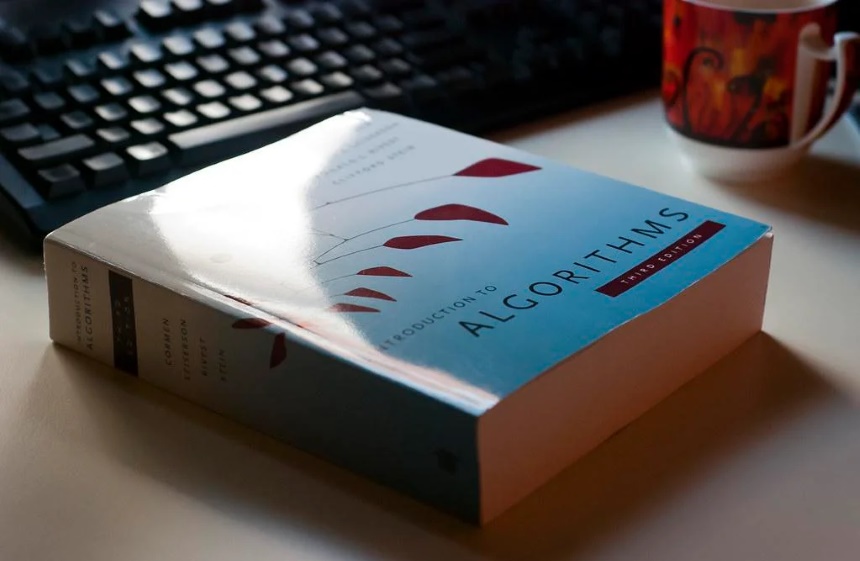 One of the best ways to determine whether or not a programming book is right for you is to take note of the author’s target audience. Most books will make it very clear who they are meant for whether it’s beginners, experienced programmers, or those somewhere in between. This can help you gauge how well the book will match your current skill level.
One of the best ways to determine whether or not a programming book is right for you is to take note of the author’s target audience. Most books will make it very clear who they are meant for whether it’s beginners, experienced programmers, or those somewhere in between. This can help you gauge how well the book will match your current skill level.
If you’re a complete beginner, look for a book that starts from the very basics and gradually builds up to more complex concepts. These types of books will typically include exercises and challenges to help you practice what you’ve learned. If you only start your journey in the programming world, you can start with one of the easiest but frequently-used languages – Python. We compiled the best Python books for you to choose from.
If you’re an intermediate or experienced programmer, look for a book that covers more advanced topics and provides detailed explanations. These types of books can help you expand your knowledge and take your skills to the next level.
Topics Covered
When selecting a programming book, it’s also important to consider the range of topics that are covered. Some books focus on specific languages while others provide a more general overview of programming concepts like artificial intelligence. By the way, if you want to know more about AI, we suggest checking out the best Artificial Intelligence books.
If you’re just starting out, you’ll likely want a book that covers the basic concepts of programming in addition to teaching you how to code in a specific language. Once you’ve mastered the basics, you can then move on to more specialized
Author(s) of the Book
Another important thing to consider is who the author(s) of the book is. Do a bit of research on the author (or authors) to see if they are reputable and have expertise in the programming field. A good way to do this is to look for reviews of their other books or see if they have any articles or blog posts on the subject. Find what degree, if any, they have in computer science or a related field.
You should also make sure that the author has updated the book to include the latest changes in the programming language. For example, if you’re looking for a book on C++ programming, make sure that it covers the latest version of the book on C++ (currently C++ 20). You can find your perfect option in our list of the best C++ books.
You should also make sure that the author(s) have a writing style that is easy for you to understand. Some people prefer short and concise explanations while others prefer a more light-hearted and conversational style. There is no right or wrong answer here, it just depends on what you personally find to be more readable and understandable.
Organization and Structure of the Book
The organization and structure of a programming book can vary considerably depending on the author’s approach. Some books are more like traditional textbooks where each chapter builds upon the previous one. Other books might be more like reference guides that you can dip in and out of as needed.
Language You Plan to Focus On
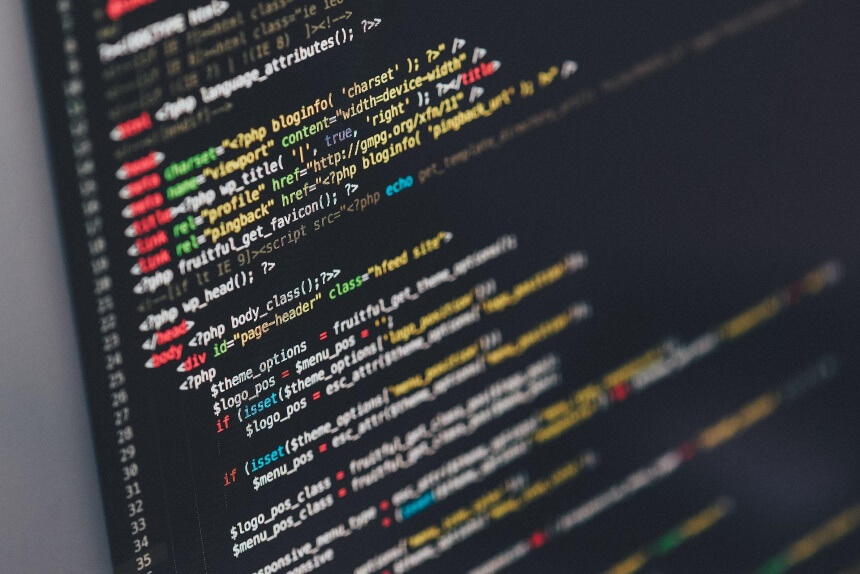 If you’re just starting out, you’ll want to choose a book that covers the programming language you’re interested in learning. For example, if you want to learn Java, look for a book that focuses specifically on Java programming. If you don’t know where to start, check out our compilation of the best Java books. It is used in a wide variety of applications, from web-based applications to enterprise-level systems
If you’re just starting out, you’ll want to choose a book that covers the programming language you’re interested in learning. For example, if you want to learn Java, look for a book that focuses specifically on Java programming. If you don’t know where to start, check out our compilation of the best Java books. It is used in a wide variety of applications, from web-based applications to enterprise-level systems
On the other hand, if you’re already experienced in one or more languages, you might want to choose a book that covers multiple languages. This can help you learn new languages more quickly as well as compare and contrast different approaches to programming.
C and С++ and books on it
C and C++ are two of the most popular programming languages in existence. While C is a core language, C++ is an extension of it. With these languages, you can do anything; that’s why businesses big and small use them regularly because they’re scalable and viable options. As with any language, you can find a variety of books on this one.
С# and Books on It
C# is a Microsoft language, created to compete with Java. It’s widely used in developing desktop applications, as well as web applications and games. Like with any other language, you can find several books on the subject with the best C# books already awaiting.
PHP and Books on It
PHP is a general-purpose scripting language that was originally designed for web development. It can be embedded into HTML and it’s fairly easy to learn compared to other languages. Despite its simplicity, it’s a powerful tool that powers some of the largest websites in the world, such as Facebook, Wikipedia, and Tumblr. You can find many books on the subject, but we’ve compiled a list of what we believe are the best PHP books.
HTML and Books on It
HTML, or HyperText Markup Language, is the standard markup language for documents designed to be displayed in a web browser. It can be used to structure, present, and manipulate content on the World Wide Web. You don’t need to know HTML to write a website, but we’ve prepared a list of some of the best HTML books for those interested in learning more about the language.
SQL and Books on It
SQL is a standard database query language that’s used for managing data in relational databases. It’s one of the most widely used languages in the world and it’s essential for anyone looking to work with data. Choosing a book on SQL can be tricky, but we’ve gone ahead and compiled a list of some of the best SQL books to help you get started.
Python and Books on It
Python is a widely used high-level interpreted programming language. It’s known for its ease of use and readability, as well as its vast libraries and frameworks. Python is used in many different fields, such as web development, scientific computing, data mining, artificial intelligence, and more. There are plenty of books and courses on Python, be careful when choosing as some can be outdated.
Linux and Books on It
Linux is a Unix-like operating system that was designed to provide a free, open-source alternative to proprietary systems such as Windows. Linux is widely used in servers, mainframes, and embedded systems. It’s also popular with developers because it offers a wide variety of distributions, or “flavors,” each with its own software repositories and package managers. With so many options available, choosing a book on Linux can be daunting. So we’ve gathered the best Linux books for both beginners and experienced users.
No matter what language you want to learn, there’s a book out there for you. Learning to code is a process, and these books will help you on your journey to becoming a programmer. Whether you’re just getting started or you’re looking to brush up on your skills, these books will give you the guidance and direction
FAQ
Will these books be as useful as the ones used on courses like Harvard’s CS50?
The books on this list are chosen based on their ability to teach programming principles in an engaging and accessible way. While they may not be used in a college-level course, they will still provide you with the foundation you need to become a competent programmer.
What other resources do you recommend for learning programming?
In addition to these books, we also recommend taking an online course), signing up for a coding BootCamp, or working with a tutor or mentor.
What else can I learn from the books?
Depending on the book, you can learn about specific programming languages, software development methodologies, tips for debugging code, and ways to optimize code performance. You can even learn how to write texts from scratch, using the best copywriting books.
Our Verdict
Our Editor’s Choice is Clean Code: A Handbook of Agile Software Craftsmanship for the best programming book because it not only teaches you how to write clean code, but also provides case studies and heuristics for cleaning code bases.
Next on the list, you’ll find Cracking the Coding Interview: 189 Programming Questions and Solutions. It contains a wealth of interview questions ranging from basic to trickier algorithm problems, providing readers with ample opportunity to practice and hone their skills.
Last is Introduction to Algorithms, often called the “bible” of algorithms due to its in-depth coverage and mathematical rigor. It’s a great resource for students and professionals alike, with each chapter being self-contained and able to stand on its own as a unit of study, this is one of the best programming books so far.
